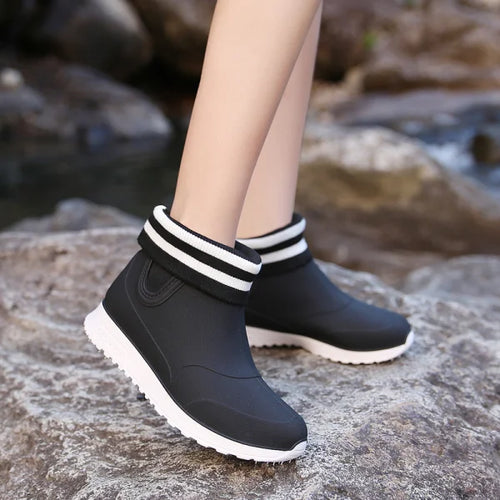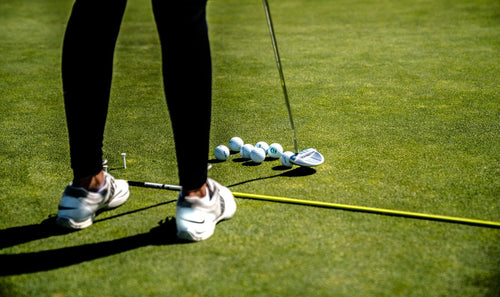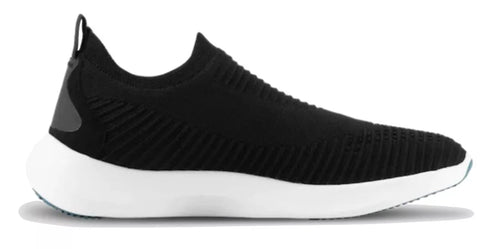They say everything comes back full circle. So, is that what’s going on with this whole barefoot shoes movement?
You would think that with the invention and subsequent technological developments in footwear, running shoes would be here to stay. But alas, the people have spoken, and they demand less cushioning.
It’s almost like they want to return to their roots.
But ask yourself this: is that really such a terrible thing? After all, our bodies can handle a lot. That’s because they were designed that way.
So why not unleash the full potential of our bodies by removing the safety net of extensive cushioning beneath our soles? Careful, though; when it comes to barefoot shoes, you have to take it one step at a time.
Of course, the first step is understanding what exactly these shoes are.
What Are Barefoot Shoes?
Let’s address the elephant in the room: yes, “barefoot shoes” is an oxymoron. After all, how can you be barefoot and wear shoes at the same time?
But you see, the “barefoot” in this phrase refers to shoes that very closely mimic the feeling of being bare feet. So, you’ll still be wearing shoes; you’ll just feel more… grounded. Of course, the word “grounded” here implies two things.
The first and most obvious implication is that these kinds of shoes help you better feel the ground with your feet— every ridge and dent in the ground. How does that help, you ask? We’ll get there.
The more pressing question right now is how do these shoes let you get so close to the ground? Simple! Barefoot shoes have:
- No elevated heel
- Minimal padding
- Ultra-thin sole
By comparison, traditional running shoes, such as the Loom Waterproof Lightweight Running Shoes, have a high heel drop, elevated heels, and extra cushioning.

This brings us to the second way in which barefoot or minimalist shoes make you more grounded. With less restrictive designs, these shoes foster the natural biomechanics of your feet as you walk or run, thereby improving your balance and stability. This is achieved by the shoes’:
- Wide toe box
- Flexible material
- Minimal arch support
But the same question arises again: Is this a gimmick, or do barefoot shoes actually have some benefits?

Benefits of Barefoot Shoes
With all this rage around barefoot shoes, surely there must be some ground-breaking evidence supporting these claims.
But the fact of the matter is that the barefoot movement has just as many proponents as naysayers.
While there is a lot of scientific credibility to the movement, the real testimonies are people’s experiences ever since going barefoot. Generally, though, the barefoot movement helps achieve the following:
- Regaining natural gait. With elevated heels and extensive arch support, our feet tend to strike heel-first while walking and running. This leads to longer strides with a higher initial impact. On the other hand, the minimal padding of barefoot shoes favors a mid to forefoot strike, which leads to shorter, quicker, and less painful strides.
- Spine alignment. The zero heel drop of these minimalist shoes improves ankle stability and favors your natural pronation. As a result, your ankle rolls exactly as it should. This increased ankle stability could alleviate any lower back pains and subsequently help with spine alignment.
- Decreased foot pains. Another benefit of letting your natural gait shine through is healing any foot pains from improper pronation (or how your ankles roll upon ground impact).
- Increased proprioception. Proprioception refers to our sense of self-movement, body position, and spatial awareness. It’s no wonder that fewer barriers between the feet and the ground will increase sensory feedback. This, in turn, will help you become much more aware of and receptive to the ground upon which you stand.
Also read: How to Accurately Tell a Person’s Personality from Their Shoes
How To Transition To Barefoot Running

First thing’s first: the barefoot movement isn’t for everyone. In fact, some people might not benefit from it at all, while others may actually end up sustaining injuries.
Of course, the important thing to avoid is the latter; you need to carefully plan your transition before you start wearing barefoot shoes on the go. Here’s how:
Step 1: Distinguish Between Minimal And Barefoot Soles
The distinction between barefoot and minimal soles is an important one when it comes to understanding the barefoot movement.
You see, true barefoot footwear is one that has separate toe pockets and boasts zero heel drop without any arch support or stability elements.
On the other hand, minimal shoes are a mix between barefoot shoes and traditional running shoes. You’ll find that most shoe brands are referring to minimal shoes when they come out with a new barefoot line.
Step 2: Acclimatize Your Feet
Regardless of which of the two types of minimalist shoes you go for, you need to let your feet slowly become used to the new sensations.
First, wear shoes around the house only. Then, you can slowly try standing and shifting around on harder ground like gravel and then incorporate some small-distance walking. Gradually, turn that walking gait into a running stride, and start adding distance over time.
Step 3: Practice Your Running Mechanics
Years of running in heavily cushioned shoes will have spoiled your habits. Now, you need to learn how to land on your midfoot instead of on your heels as you typically do. If you try landing on your heels wearing barefoot shoes, you will not only worsen your gait but also injure yourself.
Top 5 Barefoot Shoes For Walking Or Running
If the barefoot movement has converted you, try your hand (or your feet, in this case) at the following barefoot-community-approved best lightweight running shoes.
1. Vivobarefoot Primus Trail II FG
Highlights:
- Best for off-road hiking and trekking
- Made from recycled PET bottles
- All-weather mesh upper
You would think that the last place you want to go barefoot is on a hiking trail. With the jagged rocks and uneven ground, this is the one place in which you need the most reinforcement.

But remember: barefoot shoes don’t always have to be non-reinforced.
On the contrary, the Vivobarefoot Primus Trail II FG shoes prove that a barefoot shoe can offer all the safety of regular trekking shoes, minus the over-enthusiastic cushioning. The combination of wide, thin, and flexible construction encourages natural stability, more skillful movements, and foot strength.
2. Merrell Vapor Glove 5
Highlights:
- Best for easy trail and beach runs
- Flexible Vibram outsoles
- Non-obstructive rubber toe and heel bumpers
This barefoot shoe by Merrel fits like a glove and feels like socks on your feet. But don’t be fooled by Merrell Vapor Glove 5’s “minimal barefoot” label; these shoes actually come with non-obstructive rubber toe and heel bumpers to protect your feet.

Not only that, but they actually pack a punch when it comes to traction and grip. The thin film of flexible Vibram outsoles keeps you upright without restricting your movement too much.
Moreover, the Vapor Glove 5 sticks to the Barefoot 2’s construction—Merrell’s signature barefoot shoe profile. Combined with an EVA foam insole, these minimal shoes will give you the best of both worlds between barefoot shoes and traditional lightweight running shoes.
3. Xero Shoes Prio
Highlights:
- Best all-purpose shoe for running, walking, or going to the gym
- 5 mm rubber outsole
- Instep straps for security
- vegan-friendly
Remember how we talked about proprioception and its significance in barefoot running? Well, this aspect of sensory feedback and spatial awareness is so important that Xero named one of their barefoot shoe lines after it.

The Xero Shoes Prio definitely stays true to its name. With their ultra-thin 5.5 mm rubber outsole, the shoes offer protection without compromising on ground feedback.
Moreover, these lightweight running shoes weigh only about 7.6 ounces each. You’ll actually feel like you’re wearing nothing on your feet.
4. Vivobarefoot Addis
Highlights:
- Best casual dress shoe
- Wild hide leather
The barefoot movement extends to everyday fashion as well. Case in point: The Vivobarefoot Addis.
Once again, Vivobarefoot takes the lead in the barefoot movement by offering barefoot casual dress shoes. On the one hand, they give you the full range of barefoot benefits on the go.

On the other hand, they feature a wild hide leather upper which keeps things classy and stylish. But contrary to what you might be thinking, this leather is extremely soft and promises a chaffing-free experience.
Rest assured, with these fashionable barefoot shoes, you won’t even notice the leather is there.
5. Vibram FiveFingers Classic
Highlights:
- True barefoot
- Great for fitness training, watersports, and everyday wear
- 5 mm performance rubber outsoles
When it comes to true barefoot shoes, you either love them, or you hate them— there is no in-between.
But if you want to give the whole five-fingers shoes thing a try, the Vibram FiveFingers Classics is as good a product as any with which to start. If you didn’t already know, these are the shoes that started the whole minimal barefoot movement.
With 3.5 mm rubber outsoles, your feet won’t get any closer to the ground than this. Moreover, the constant breeze and ventilation through the low-cut front and open design will make you feel like you’re actually barefoot.
Conclusion
The barefoot shoes movement has been a hit or miss with a lot of people. But if you’re willing to take the leap and give something new a try for once, these shoes might just be what you need.
Whether it’s for performance, health, style, comfort, or all of the above, the barefoot movement has something to offer to everyone.
Even if you don’t end up liking this new trend, aren’t you at least a little curious to try it? Don’t deny it; it’s about time you take off those highly cushioned shoes and see how your feet move naturally for once.
Disclaimer
Loom is a participant in the Amazon Services LLC Associates Program, an affiliate advertising program designed to provide a means for sites to earn advertising fees by advertising and linking to Amazon.com.
You may also like: 10 Best White Shoes For Men in 2021

























